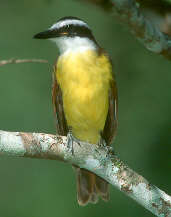
The Great Kiskadee is one of the most common birds in South America where it is found everywhere except on the Pacific coast and in the far south. It is also distributed in Central and North America. See the distribution map at xeno-canto.
There are several sub-species. Birds in São Paulo (5th photo) are considerably less rufous on the wings than the birds in photos 1 to 3 taken at Serra de Canastra, Minas Gerais and the ones that I used to see in my garden in Pereira, Colombia. The yellow spot at the base of the bill, seen in these birds, was also present in the Colombian birds but seems to be absent from most if not all São Paulo birds and those of Honduras in photos 6 and 7).
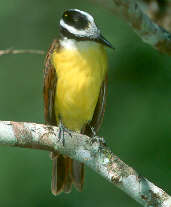
They eat almost anything including fish (and have been seen catching hummingbirds) but their normal diet consists of insects and fruit.
Their call is one of the best known in South America and has given rise to its name in various languages: Kiskadee in English; Bem-te-vi in Portuguese and Cristo-Rey in Spanish.

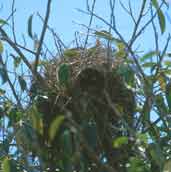
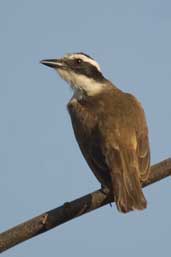
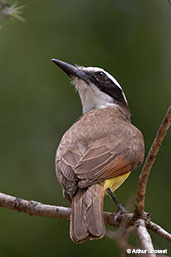
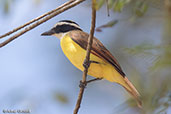
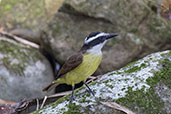
| Previous Page | Back to Index | Next Page |